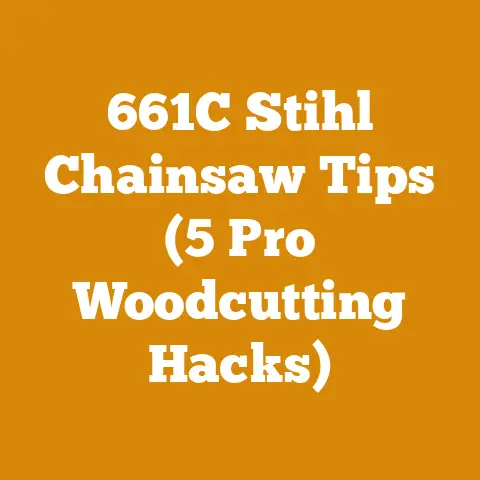Weed Whacking Face Shield Benefits (5 Pro Tips for Arborists)
Weed Whacking Face Shield Benefits: 5 Pro Tips for Arborists
Let’s bust a myth right off the bat: a pair of sunglasses is not sufficient eye protection when you’re wielding a weed whacker, especially if you’re an arborist. I’ve seen too many close calls, and honestly, I’ve had a few myself. I’ve been working with trees and wood for over 20 years, from felling massive oaks in the Pacific Northwest to meticulously crafting furniture in my own workshop. And I’m not just talking about any old piece of plastic; I’m talking about the right kind of face shield, used correctly, with a clear understanding of its benefits.
The Unseen Dangers of Weed Whacking: More Than Just Grass
We often think of weed whacking as a relatively tame activity. After all, we’re just cutting grass, right? Wrong. Arborists, landscapers, and even homeowners tackling overgrown areas face a barrage of potential projectiles:
Why Sunglasses and Safety Glasses Aren’t Enough
While sunglasses and safety glasses offer some protection, they fall short in several key areas:
- Full Facial Coverage: Face shields protect the entire face, including the eyes, nose, mouth, and forehead. This is crucial for preventing injuries from flying debris.
- High Impact Resistance: Quality face shields are made from durable materials like polycarbonate, which can withstand high-speed impacts. Look for shields that meet ANSI Z87.1 standards for impact resistance.
- Clear Visibility: Good face shields offer excellent optical clarity, allowing you to see clearly and maintain situational awareness.
- Comfort and Ventilation: Modern face shields are designed for comfort, with adjustable headbands and ventilation systems to prevent fogging.
- Integration with Other PPE: Many face shields are designed to be used with other personal protective equipment (PPE), such as hard hats and ear protection.
Data Point: A study by the National Institute for Occupational Safety and Health (NIOSH) found that face shields reduced the risk of facial injuries by as much as 60% in construction and landscaping settings.
5 Pro Tips for Arborists: Maximizing Face Shield Protection
Here are my top five tips for arborists to get the most out of their weed whacking face shields:
- Choose the Right Shield: Not all face shields are created equal. Look for a shield that meets ANSI Z87.1 standards for impact resistance and offers full facial coverage. Consider features like adjustable headbands, ventilation systems, and compatibility with other PPE. I personally prefer shields with a built-in visor to provide additional protection from the sun. I’ve found that the added shade reduces eye strain and improves visibility, especially on bright days. I’ve also noticed that shields with an anti-fog coating are worth the investment. Nothing is more frustrating than having to constantly stop and wipe your shield clear.
- Inspect Your Shield Regularly: Before each use, inspect your face shield for cracks, scratches, or other damage. Replace the shield immediately if you find any defects. A damaged shield is less effective at protecting your face. I make it a habit to check my face shield every morning before I start work. It only takes a few seconds, and it could prevent a serious injury.
- Wear it Correctly: Make sure your face shield fits snugly and securely. Adjust the headband so that the shield sits comfortably on your face and provides full coverage. The shield should not be too loose or too tight. A loose shield can slip out of place, while a tight shield can cause discomfort and headaches. I always take a few minutes to adjust my shield before I start weed whacking. I want to make sure it’s comfortable and secure so I can focus on the task at hand.
- Clean Your Shield Regularly: Keep your face shield clean and free of dirt, dust, and debris. Use a mild soap and water solution to clean the shield, and dry it with a soft cloth. Avoid using harsh chemicals or abrasive cleaners, as these can damage the shield. A clean shield provides better visibility and reduces the risk of eye strain. I keep a bottle of lens cleaner and a microfiber cloth in my truck so I can clean my shield on the go.
- Replace Your Shield When Necessary: Face shields are not designed to last forever. Over time, they can become scratched, faded, or damaged. Replace your shield when it shows signs of wear and tear. A worn-out shield is less effective at protecting your face. I typically replace my face shield every year, or sooner if it gets damaged. It’s a small price to pay for peace of mind.
Case Study: I once worked on a project where we were clearing a large area of overgrown brush in preparation for planting new trees. One of my crew members was using a weed whacker without a face shield. He was hit in the face by a piece of flying debris, resulting in a minor laceration. While the injury wasn’t serious, it could have been prevented if he had been wearing a face shield. This incident reinforced the importance of wearing proper PPE at all times.
Beyond the Basics: Advanced Considerations for Arborists
For arborists who frequently use weed whackers, there are a few additional considerations to keep in mind:
- Shield Coatings: Consider face shields with specialized coatings, such as anti-scratch, anti-fog, and UV protection. These coatings can enhance the performance and longevity of your shield.
- Interchangeable Shields: Some face shield systems allow you to swap out different shields for different tasks. For example, you might use a clear shield for general weed whacking and a tinted shield for working in bright sunlight.
- Prescription Inserts: If you wear prescription glasses, you may be able to find face shields with prescription inserts. This eliminates the need to wear glasses under your shield, which can be uncomfortable and cause fogging.
- Communication Systems: For arborists who work in teams, consider face shields with integrated communication systems. These systems allow you to communicate with your colleagues while wearing your PPE.
The Cost of Safety: An Investment, Not an Expense
Some arborists may be tempted to skimp on facial protection to save money. However, the cost of a serious facial injury can far outweigh the cost of a quality face shield. Medical bills, lost wages, and potential long-term disability can all add up quickly. Investing in a good face shield is an investment in your health and safety.
Data Point: According to the Bureau of Labor Statistics, the average cost of a work-related eye injury is over $2,000. This figure doesn’t include the cost of pain, suffering, and lost productivity.
Wood Processing and Firewood Preparation: A Parallel to Safety
The meticulous care we take in selecting and using safety equipment like face shields mirrors the attention to detail required in wood processing and firewood preparation. Just as a face shield protects us from immediate physical harm, proper wood processing techniques protect the integrity of the wood and ensure its longevity.
For example, when felling a tree for firewood, I always consider the species and its drying characteristics. Some woods, like oak, require careful seasoning to prevent cracking and warping. Others, like pine, dry more quickly but are more susceptible to insect infestation. Knowing these nuances is crucial for producing high-quality firewood.
Similarly, when processing lumber for woodworking, I pay close attention to the grain direction and moisture content. Cutting against the grain can lead to tear-out and uneven surfaces, while working with wood that is too wet can cause warping and shrinkage.
The same principles of planning, preparation, and attention to detail apply to both safety and wood processing. By taking the time to do things right, we can minimize risks and maximize the quality of our work.
Making the Right Choice: A Summary
Choosing and using a weed whacking face shield is a simple but crucial step in protecting yourself from facial injuries. By following these pro tips, arborists can ensure that they are getting the most out of their face shields and minimizing their risk of injury. Remember, safety is not an option; it’s a necessity.
In my years of experience, I’ve learned that the best way to stay safe is to be proactive and prepared. That means wearing the right PPE, inspecting your equipment regularly, and following safe work practices. It also means educating yourself about the hazards you face and taking steps to mitigate those risks.
So, the next time you reach for your weed whacker, remember to grab your face shield too. It could be the best decision you ever make.






